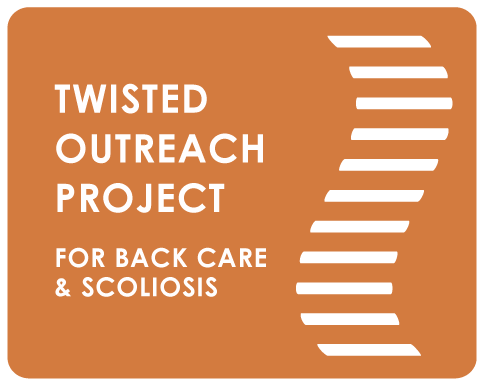Fusion Q&A with Martha Carter - Scoliosis Caused by Trauma?
In our April Newsletter, we launched a Fusion Q&A series. Every month since, Martha has answered an anonymous question about scoliosis fusions.
****
QUESTION: Is scoliosis caused by a traumatic event? And if so, what does that mean — and what to do about it?
trau·ma
/ˈtroumə,ˈtrômə/ a deeply distressing or disturbing experience.
Adolescent Idiopathic Scoliosis (AIS) is the most common form of scoliosis — ‘idiopathic’ meaning there is no known cause. There are some evolving theories that consider the role of genetics, growing patterns, hormones, neuromuscular transmitters and other factors that are leading to interesting treatment options, however, there is still no clear understanding of how to prevent curvature of the spine from developing.
It is important to remember that there are other categories of scoliosis (congenital, functional, adult) that may be caused by a specific condition or injury, but these are very specific and much less common.
Through my recent training in Essential Somatics — a gentle exercise system to rebalance the brain-body connection — I learned that they refer to scoliosis as a ’trauma reflex’, meaning that they believe that the body’s natural response to a 'traumatic event' has caused it to become asymmetrical. This seems logical in some ways, but don’t all children get physically traumatized at some point through normal activities - such as falling off a bike or roughing it up with other kids? Yet not everyone develops scoliosis, so that cannot be the only reason.
Regardless of the cause, scoliosis and all the treatments that go with it can definitely be ‘deeply distressing and/or disturbing’, as the definition describes it — for the body, mind, heart and soul!
While nobody is certain whether or not trauma CAUSES scoliosis, we are quite certain that living with scoliosis can definitely cause trauma(!) due to the pain, discomfort, body distortion, braces, fusions, emotional distress, etc.
So what to do about it?
As with everything scoliosis-related, the physical and emotional ripples affect everyone differently. However, there are two very easy way to start to address the traumatic effects of your own scoliosis by yourself.
BREATHE and NOTICE. Sit down or lie down and breathe deeply and slowly for ten deep breaths. Explore inhaling and exhaling through your nose, slowing down each breath as you feel your belly and ribs expand and contract. Notice how this feels in general. Observe how your body relaxes. Repeat several times a day as needed.
This is the starting place and it may already be enough to reduce pain and feel better.
To learn more, see some links to interesting articles and videos below:
Martha teaching her approach to breathing:
https://www.youtube.com/watch?v=xQWuVdN781I&list=PLGa_vQfjMiwGe0B6sBoOQjkphIPWHyxnf&index=2Bessel Van de Kolk (a trauma specialist) shares some interesting perspectives on Trauma:
https://youtu.be/MmKfzbHzm_sMartha's blog about the Somatic approach to working with Scoliosis:
https://www.twistedoutreachproject.com/blog/2018/12/4/somatics-learning-how-to-alleviate-patterns-of-pain-and-trauma?rq=somatics

